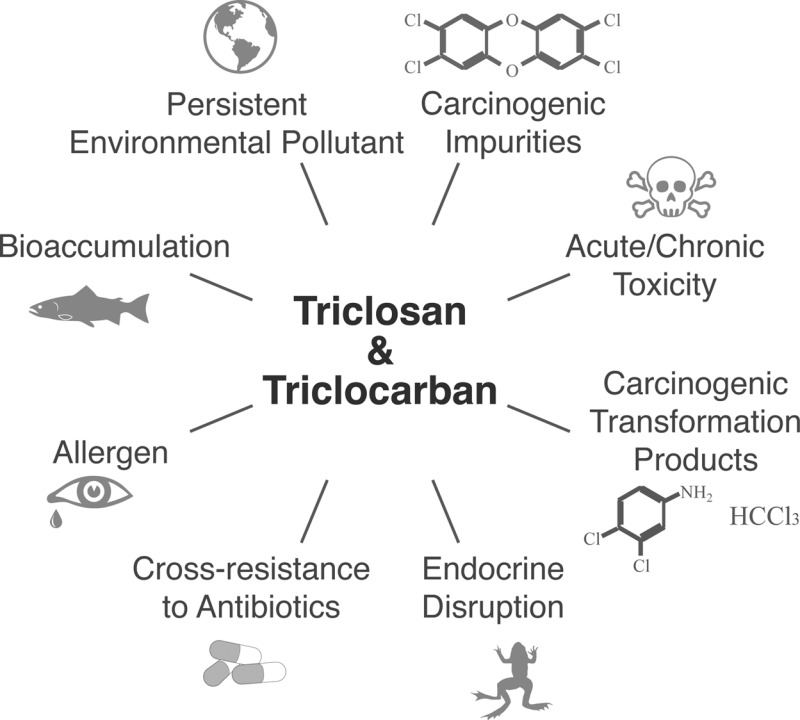- Record: found
- Abstract: found
- Article: not found
On the Need and Speed of Regulating Triclosan and Triclocarban in the United States

Read this article at
Abstract

The polychlorinated aromatic antimicrobials triclosan and triclocarban are in widespread use for killing microorganisms indiscriminately, rapidly, and by nonspecific action. While their utility in healthcare settings is undisputed, benefits to users of antimicrobial personal care products are few to none. Yet, these latter, high-volume uses have caused widespread contamination of the environment, wildlife, and human populations. This feature article presents a timeline of scientific evidence and regulatory actions in the U.S. concerning persistent polychlorinated biocides, showing a potential path forward to judicious and sustainable uses of synthetic antimicrobials, including the design of greener and safer next-generation alternatives.
Abstract

The polychlorinated aromatic antimicrobials triclosan and triclocarban are in widespread use for killing microorganisms indiscriminately, rapidly, and by nonspecific action. While their utility in healthcare settings is undisputed, benefits to users of antimicrobial personal care products are few to none. Yet, these latter, high-volume uses have caused widespread contamination of the environment, wildlife, and human populations. This feature article presents a timeline of scientific evidence and regulatory actions in the U.S. concerning persistent polychlorinated biocides, showing a potential path forward to judicious and sustainable uses of synthetic antimicrobials, including the design of greener and safer next-generation alternatives.
Related collections
Most cited references97
- Record: found
- Abstract: found
- Article: not found
Pharmaceuticals and personal care products in the environment: agents of subtle change?
- Record: found
- Abstract: found
- Article: not found
